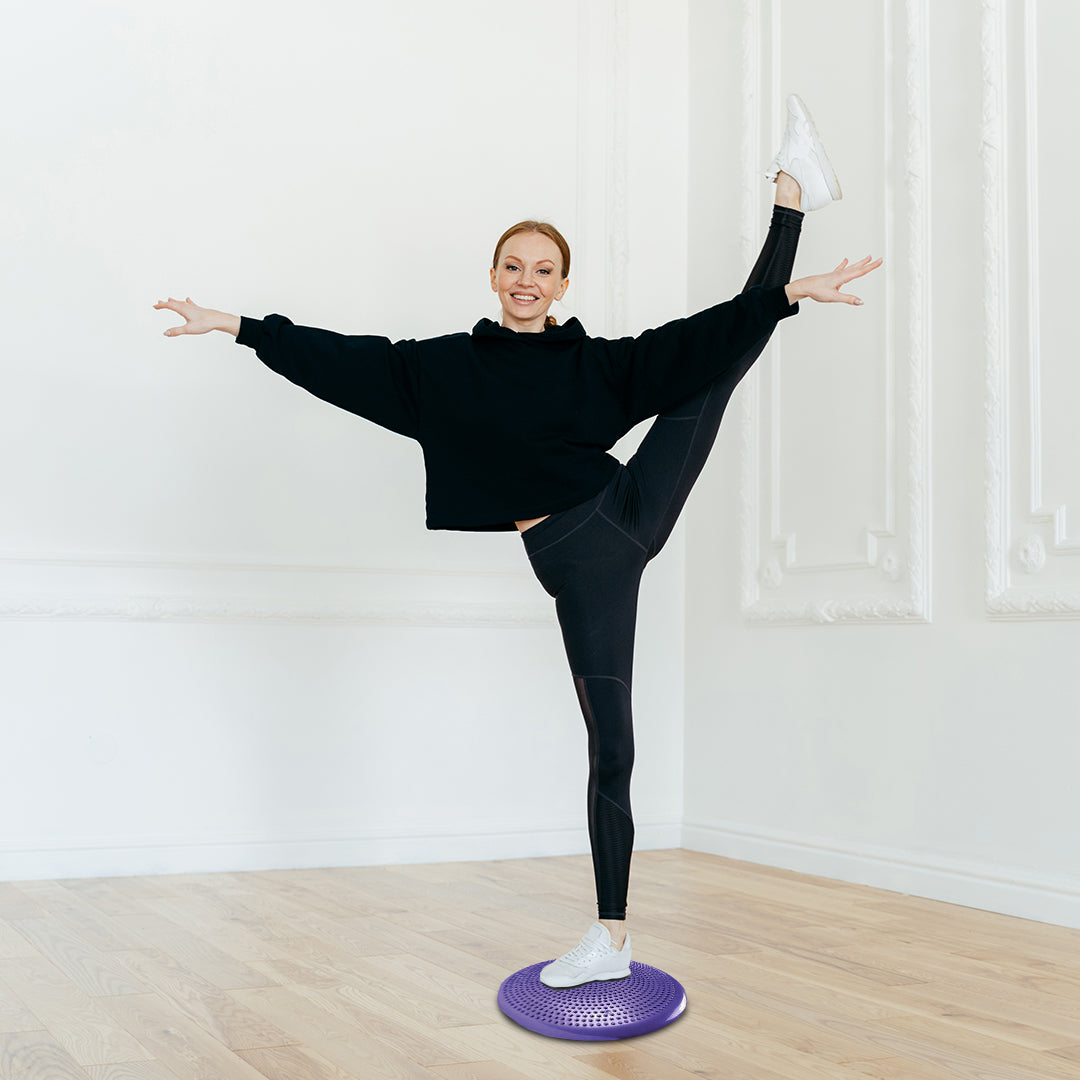Introduction
Starting a weight loss journey can bring feelings of anticipation and fear. Consistency, balanced exercises, and a well-organized program tailored to your fitness level and goals are essential for achieving successful weight loss. Greetings on Day 1 of our 7-Day Weight Loss Gym Workout Plan, created to boost your metabolism, increase strength, and prepare you for an impactful week.
Today, our emphasis is on a potent blend of High-Intensity Interval Training (HIIT) and Strength Training. Therefore, this pair enhances calorie burning while exercising and also increases your metabolism at rest, leading to sustained fat burning post-workout.

In this extensive manual, we will explore the complexities of current exercise routines, give thorough guidance, provide dietary suggestions to enhance your progress, and introduce motivational tactics to maintain your dedication. Let's get started!
Why Start with HIIT and Strength Training?
High-Intensity Interval Training (HIIT)
HIIT involves short bursts of intense exercise followed by brief periods of rest or low-intensity activity. So, these exercises are the central part of the 7-Day Weight Loss Gym Workout Plan.
however, this method has gained immense popularity due to its efficiency in burning calories and improving cardiovascular health. Research shows that HIIT can:
- Burn More Calories in Less Time: HIIT workouts can burn a significant amount of calories in a short period, making them ideal for those with busy schedules.
- Increase Metabolic Rate: The intense nature of HIIT elevates your metabolism, promoting fat loss even after the workout.
- Improve Heart Health: Regular HIIT sessions enhance cardiovascular endurance and reduce the risk of heart disease.
Strength Training
Strength training, on the other hand, focuses on building muscle mass through resistance exercises. Benefits include:

- Enhanced Muscle Definition: Toning and defining muscles for a leaner appearance.
- Increased Metabolic Rate: More muscle mass means your body burns more calories at rest.
- Bone Health: Strength training strengthens bones, reducing the risk of osteoporosis.
- Functional Strength: Improves your ability to perform everyday activities with ease.
Combining HIIT with strength training creates a synergistic effect, optimizing fat loss while building lean muscle. Also, this balanced approach ensures that you achieve a toned physique and sustainable weight loss.
Today’s Workout Plan: HIIT and Strength Training
Workout Structure Overview
- Warm-Up (10 minutes)
- HIIT Session (30 minutes)
- Strength Training (40 minutes)
- Cool Down (10 minutes)
1. Warm-Up (10 Minutes)
A proper warm-up prepares your body for the intense workout ahead, reduces the risk of injury, and enhances performance.

Dynamic Stretches (5 minutes):
- Arm Circles: 30 seconds forward, 30 seconds backward.
- Leg Swings: 30 seconds per leg, swinging front to back and side to side.
- Torso Twists: 1 minute, gently rotating the torso left and right.
Light Cardio (5 minutes):
- Jumping Jacks: 2 minutes to elevate the heart rate.
- High Knees: 1 minute, bringing knees up to waist level.
- Butt Kicks: 1 minute, kicking heels towards the glutes.
- Light Jogging in Place: 1 minute to maintain an elevated heart rate.
Tip: Focus on controlled movements and gradually increase intensity to prepare your muscles and joints for the workout.
2. HIIT Session (30 Minutes)- 7-Day Weight Loss Gym Workout Plan
HIIT is all about intensity. The goal is to push your limits during the high-intensity intervals, followed by brief recovery periods.
Structure:
- Work Interval: 30 seconds of maximum effort.
- Rest Interval: 30 seconds of rest or low-intensity activity.
- Total Rounds: 10 rounds (20 minutes)
- Active Recovery: 10 minutes of lower-intensity exercises.
HIIT Exercises:

- Sprint Intervals:
- How to Perform: Run at maximum speed for 30 seconds.
- Rest: Walk or jog slowly for 30 seconds.
- Modification: Use a treadmill set to a high incline or perform stationary sprints if outdoors is not feasible.
- Burpees:
- How to Perform: From a standing position, drop into a squat, kick your feet back into a plank, perform a push-up, return to squat, and jump up.
- Rest: 30 seconds.
- Modification: Remove the push-up for lower intensity.
- Jump Squats:
- How to Perform: Perform a squat, then explosively jump upwards.
- Rest: 30 seconds.
- Modification: Perform regular squats without the jump.
- Mountain Climbers:
- How to Perform: Start in a plank position, alternate bringing knees to chest rapidly.
- Rest: 30 seconds.
- Modification: Slow down the pace or perform standing mountain climbers.
- High Knees:
- How to Perform: Run in place, lifting knees as high as possible.
- Rest: 30 seconds.
- Modification: Reduce the speed or intensity.
Active Recovery Exercises (10 minutes):
- Light Jogging or Cycling: Maintain a steady, moderate pace.
- Dynamic Stretches: Incorporate gentle movements to keep muscles engaged.
Tip: Focus on maintaining proper form during high-intensity intervals to maximize benefits and prevent injuries.
3. Strength Training (40 Minutes)
Strength training today focuses on both the upper and lower body, incorporating compound and isolation exercises to build muscle and enhance metabolism.

Structure:
- Upper Body (20 minutes)
- Lower Body (20 minutes)
Upper Body (20 Minutes)
- Push-Ups (3 sets of 12 reps):
- How to Perform: Start in a plank position, lower your body until your chest nearly touches the floor, and push back up.
- Modification: Perform on knees or against a wall.
- Dumbbell Bench Press (3 sets of 10 reps):
- How to Perform: Lie on a bench, hold dumbbells at chest level, and press upwards until arms are fully extended.
- Tip: Keep elbows at a 45-degree angle to target the chest effectively.
- Bent-Over Rows (3 sets of 12 reps):
- How to Perform: Bend at the waist with a flat back, hold dumbbells, and pull them towards your torso.
- Modification: Use a barbell or resistance band.
- Bicep Curls (3 sets of 15 reps):
- How to Perform: Stand with dumbbells at your sides, and curl them towards your shoulders while keeping elbows stationary.
- Tip: Avoid swinging the weights; focus on controlled movements.
- Tricep Dips (3 sets of 12 reps):
- How to Perform: Use parallel bars or a bench, lower your body by bending elbows, and push back up.
- Modification: Keep feet on the ground for lower intensity.
Lower Body (20 Minutes)
- Squats (4 sets of 15 reps):
- How to Perform: Stand with feet shoulder-width apart, lower into a squat by bending knees and hips, then return to standing.
- Tip: Keep your chest up and knees tracking over your toes.
- Lunges (3 sets of 12 reps per leg):
- How to Perform: Step forward with one leg, lower your hips until both knees are bent at 90 degrees, then push back to the starting position.
- Modification: Perform stationary lunges without stepping forward.
- Deadlifts (3 sets of 10 reps):
- How to Perform: With feet hip-width apart, hold a barbell or dumbbell in front, hinge at the hips, lower the weights towards the ground while keeping a flat back, then stand back up.
- Tip: Focus on engaging the hamstrings and glutes.
- Leg Press (3 sets of 12 reps):
- How to Perform: Use the leg press machine, push the platform away by extending your legs, then slowly return.
- Modification: Adjust weight based on comfort and capability.
- Calf Raises (3 sets of 20 reps):
- How to Perform: Stand on a step or flat surface, raise your heels as high as possible, then lower them back down.
- Tip: Perform slowly to maximize muscle engagement.
Tip: Choose weights that challenge you but allow you to complete each set with proper form. Rest for 60 seconds between sets to maintain intensity.
4. Cool Down (10 Minutes)-7-Day Weight Loss Gym Workout Plan

Cooling down helps in gradually lowering your heart rate, reducing muscle stiffness, and promoting flexibility. Therefore, you must maintain a routine to cool down your body.
Static Stretches (7 minutes):
- Hamstring Stretch: 1 minute per leg.
- Quadriceps Stretch: 1 minute per leg.
- Chest Stretch: 1 minute.
- Shoulder Stretch: 1 minute.
- Triceps Stretch: 1 minute.
Deep Breathing Exercises (3 minutes):
- How to Perform: Sit or lie down comfortably, inhale deeply through your nose for 4 counts, hold for 4 counts, and exhale through your mouth for 4 counts. Repeat.
Tip: Focus on breathing deeply to enhance relaxation and aid in recovery.
Nutrition Tips for Day 1

Post-Workout Nutrition
After an intense workout, your body needs nutrients to repair muscles and replenish energy stores. In that case, Focus on certain tips discussed below.
- Protein: Essential for muscle repair. Aim for 20-30 grams post-workout.
- Examples: Grilled chicken breast, protein shake, Greek yogurt.
- Carbohydrates: Replenish glycogen stores.
- Examples: Brown rice, sweet potatoes, whole-grain bread.
- Hydration: Replace fluids lost through sweat.
- Drink: Water, electrolyte-infused beverages.
Sample Post-Workout Meal: Grilled Chicken Quinoa Bowl
Ingredients:
- 6 oz grilled chicken breast
- 1 cup cooked quinoa
- ½ cup steamed broccoli
- ¼ cup diced bell peppers
- 1 tbsp olive oil
- Lemon juice, salt, and pepper to taste
Instructions:
- Grill the Chicken: Season with salt, pepper, and lemon juice. Grill until fully cooked.
- Cook Quinoa: Rinse quinoa and cook according to package instructions.
- Steam Vegetables: Steam broccoli and bell peppers until tender.
- Assemble Bowl: Combine quinoa, grilled chicken, and vegetables. Drizzle with olive oil and additional lemon juice if desired.
Tip: Prepare ingredients in advance to ensure you have a nutritious meal ready post-workout.
Hydration Strategies
- Pre-Workout: Drink 16-20 oz of water 2 hours before exercising.
- During Workout: Sip water regularly, especially during HIIT intervals.
- Post-Workout: Aim to drink at least 16-24 oz of water within an hour after your workout.
Tip: Monitor urine colour; pale yellow indicates proper hydration.
Motivation and Mental Health

Setting Goals for the Week
Setting clear and achievable goals can significantly enhance your motivation and commitment. For Day 1, consider:
- Workout Goals: Complete all HIIT intervals and strength training sets with proper form.
- Nutrition Goals: Consume a balanced post-workout meal within 30 minutes of finishing your workout.
- Hydration Goals: Drink at least 8 glasses of water throughout the day.
Tip: Write down your goals and place them somewhere visible to remind yourself of your commitments.
Tracking Progress
Keeping track of your workouts and progress can provide a sense of accomplishment and identify areas for improvement. Therefore, do not forget to track your progress.
- Workout Journal: Note down exercises, sets, reps, and weights used.
- Body Measurements: Record weight, body fat percentage, and measurements of key areas (waist, hips, arms, etc.).
- Photos: Take weekly photos to visually track changes in your physique.
Tip: Use fitness apps or journals to organize and review your progress regularly.
Mental Benefits of Exercise

Engaging in regular exercise not only benefits your body but also enhances mental well-being.
- Stress Reduction: Physical activity releases endorphins, reducing stress and anxiety levels.
- Improved Mood: In addition, Regular workouts can alleviate symptoms of depression and boost overall mood.
- Enhanced Focus: Exercise increases blood flow to the brain, improving concentration and cognitive function.
Tip: Incorporate mindfulness techniques, such as deep breathing during your workout, to maximize mental benefits.
Safety and Injury Prevention
Maintaining Proper Form
Proper technique is crucial to prevent injuries and ensure you’re effectively targeting the intended muscle groups.
- Warm-Up Thoroughly: Never skip the warm-up; it prepares your muscles and joints for the workout.
- Start with Lighter Weights: If you’re new to strength training, begin with lighter weights to master the form before increasing the load.
- Controlled Movements: Also, avoid using momentum to lift weights. Focus on controlled, deliberate movements.
Listening to Your Body
Pay attention to your body’s signals to prevent overexertion and injuries.
- Pain vs. Discomfort: Learn to differentiate between muscle fatigue (normal) and sharp or sudden pain (sign of injury).
- Rest When Needed: In addition, If you feel excessively fatigued or experience pain don't forget to take a break or reduce the intensity.
- Adequate Rest: Ensure you get enough sleep and allow muscles to recover between intense workouts.
Proper Equipment Use
However, Using gym equipment correctly is essential for safety and effectiveness.
- Adjust Machines: Ensure machines are set to the appropriate height and resistance levels.
- Secure Weights: Always use collars on barbells and dumbbells to prevent weights from slipping.
- Wear Appropriate Footwear: Invest in supportive, comfortable shoes to provide stability and reduce the risk of injury.
Tip: Don’t hesitate to ask gym staff for assistance or demonstrations on how to use unfamiliar equipment.
Conclusion
Congratulations on completing Day 1 of our 7-Day Weight Loss Gym Workout Plan! By integrating HIIT and Strength Training, you’ve taken a significant step towards boosting your metabolism, building lean muscle, and setting a strong foundation for the week ahead.
Recap of Day 1:
- Warm-Up: Prepare your body for intense activity.
- HIIT Session: Then, Maximise calorie burn and elevate your heart rate.
- Strength Training: After that, Build muscle mass to enhance metabolic rate.
- Cool Down: Promoted muscle recovery and flexibility.
- Nutrition: Also, Emphasized on post-workout protein and hydration.
- Motivation: And, Set clear goals and track your progress.
- Safety: Finally, Focus on proper form and injury prevention.
Looking Ahead
Tomorrow, we transition into a Yoga for Flexibility and Recovery session. Yoga will complement today’s intense workout by enhancing flexibility, reducing muscle soreness, and promoting mental relaxation. Moreover, this balance between high-intensity and restorative practices ensures a holistic approach to weight loss and overall well-being.
Stay Consistent and Committed
Remember, consistency is key. Embrace each workout with determination, listen to your body, and celebrate your progress, no matter how small. So, Weight loss is a journey and every step you take brings you closer to your goals.
Share Your Journey
We’d love to hear about your experience today! Share your achievements, challenges, and any questions you might have in the comments below. So, let’s build a supportive community where we can motivate each other to reach our fitness aspirations.
Join Us Tomorrow
Don’t miss Day 2 of our series – Yoga for Flexibility and Recovery. Ensure you have your yoga mat ready and prepare to unwind and rejuvenate after an intense first day.
So, Stay strong, stay motivated, and keep pushing forward!
Disclaimer: This blog is intended for informational purposes only and is not a substitute for professional medical advice. Also, Always consult with a healthcare provider before starting any new fitness or nutrition program.

Frequently Asked Questions (FAQs)
-
Can I modify the HIIT workout if I’m a beginner?
Absolutely! Start with lower-intensity intervals and gradually increase the effort as your fitness improves. Focus on maintaining proper form to prevent injuries. -
How important is nutrition in this workout plan?
Nutrition plays a crucial role in weight loss and muscle recovery. So, Ensure you consume balanced meals rich in protein, carbohydrates, and healthy fats, and stay hydrated throughout the day. -
What should I do if I experience pain during the workout?
Stop the exercise immediately and assess the situation. If the pain persists, consult a healthcare professional. It’s important to differentiate between muscle fatigue and actual pain to prevent injuries. -
How can I stay motivated throughout the week?
Set clear, achievable goals, track your progress, and celebrate small victories. Therefore, Surround yourself with supportive individuals and remind yourself of the benefits you’re working towards. -
Is it necessary to take rest days during this 7-day plan?
Yes, rest and recovery are integral parts of any workout regimen. Active recovery days, like yoga and stretching, help in muscle recovery and prevent burnout.
By following this structured approach on Day 1, you set a solid foundation for the rest of the week. Stay tuned for Day 2, where we explore the calming and restorative benefits of yoga in your weight loss journey!
Connect with Us
- Facebook: Maskura
-
Instagram:
maskura_official
- Pinterest: maskura_official
- Email: customer.support@maskura.com
Subscribe to our newsletter for the latest updates, fitness tips, and exclusive content delivered straight to your inbox!





